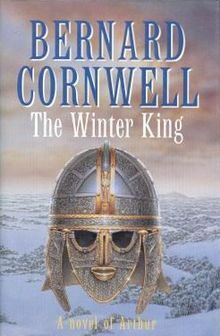Gavin G. Smith's Blog, page 3
March 30, 2015
A Quantum Mythology released

Praised by Stephen Baxter and Adam Roberts, reviewed ecstatically by SFX magazine, Gavin Smith is one of the brightest stars of space opera.
In the far future, many years after the loss of earth, humanity has changed. Strength is the only way to survive. And the most vicious man alive has a new con in mind…
Here and now, a man with unnatural powers hunts down a killer with impossible abilities. Infused with a barely-understood alien technology, the two are merely pawns in a bigger game…
A long time ago, the last tribes of Northern Britain face an unimaginable enemy. Demons risen from the sea, absorbing and twisting everything they touch. But there are some among the tribes who have power, who will fight…
And all of these times are connected…
Gavin Smith’s new epic space opera is a wide-ranging exploration of the past, present and future of mankind.
Praise for Age of Scorpio:
“Age Of Scorpio announces loud and clear that in Gavin Smith an exceptional talent has arrived to uplift SF. The book is a master class of twisting plot lines that celebrate both the weird and astounding, amid a future that’s deeply unnerving yet equally compelling.” (Peter F Hamilton)
“Gavin Smith’s writing is a brutal kaleidoscope of imagination, with the raw energy of a heavy metal album cover: equally dazzling with bloodthirsty ancient Picts and the fallen post-humans of tomorrow.” (Hannu Rajaniemi, author of The Causal Angel)
“Imagine a combination of Alistair Reynolds’s cerebral space opera, the mythological fantasy of 2000AD’s Slaine and the urban horror of Paul Cornell’s London Falling…” (SFX Magazine)
March 25, 2015
Theme Tunes

This blog was inspired by a conversation with Cybermage when I met him at a kaffeklatsch at Worldcon last year. I thought I would use the publication of A Quantum Mythology to lever in the chance to talk about one of my favourite things, music, and how music pertains to the characters in the Age of Scorpio trilogy.
Music is very important to me. I have music on the entire time. I’ve got more than three weeks worth of music on my iTunes but prefer listening to CDs and vinyl when the opportunity arises. I’ve tended to favour the rockier/metalier side of the music spectra, but that’s just nurture versus nature, I’ve managed to find something I like in just about all genres of music.
I try and listen to music that puts me in the right frame of mind and helps provide the right atmosphere for what I’m writing. (I know what a prima donna right? There’s no Green M&Ms around here.) Veteran and War in Heaven were both written listening to a lot of industrial music, particularly the Ministry, the Revolting Cocks, Front 242 and Front Line Assembly. There were occasional oblique references to the music in the stories. Jakob, the protagonist (I don’t really have heroes) of the books is a fan of jazz music, particularly John Coltrane and Miles Davis. One of my friends who cast an eye over an early draft of the books said that the song Dead End Friends by Them Crooked Vultures reminded him of Jakob and his cronies.
I need to know what sort of music the characters I write about listen to. Probably due to my own out-dated music tribalism, it helps me get an idea of the kind of person they are, even if just on the most superficial level.
With that in mind I’ve put together a mixblog of the music that helped inspire each of the characters. To avoid spoilers I’m mostly going to be talking about the characters from Age of Scorpio, though I’ve included one new character from AQM as well. (The trilogy is set across three different time periods: ancient Britain, the modern day and the far future. I’ve divided the characters into those categories:)
Ancient Britian:
Britha: Britha is a Pictish druid, a fierce protector of her people, who fights with the warriors. Due to the nature of her position, however, she is something of an outsider, as she would lose her objectivity if she got too close to those she protects and advises
Her track is Gift by Old Man Gloom. This song sort of sets the tone for all of the Ancient Britain sections in the Age of Scorpio trilogy. When I hear this track, with it’s atmospheric, doom-laden intro, followed by visceral, frenzied metal, it makes movies in my head. The image I’m always left with is of Britha stood on a rock at the head of a pass as lines of tribal warriors march by. The whole track screams (literally) of tribal life and war to me.
Fachtna: Fachtna is a warrior from the ‘Otherworld’. On the surface of it he’s a brash, cocky, warrior’s warrior, however I’m very taken with the romanticised view of the Celt as a warrior poet. For some reason the idea of the warrior poet became conflated with the Seattle music scene of the 90’s. I suspect Mark Yam’s excellent Everyone Loves Our Town, a history of the scene, influenced me.
When I was writing Fachtna I tended to listen to a lot of Soundgarden or Pearl Jam, with a bit of Alice in Chains and Nirvana thrown in (I suffered Nirvana fatigue during the 90’s, but whether I like it or not Nevermind was that decade’s soundtrack). I decided on Hunger Strike by Temple of the Dog. Temple of the Dog were a collaboration between Soundgarden and Pearl Jam. Their one eponymous album was a tribute to Andrew Wood, the singer in Mother Love Bone, who died just before the band’s debut album was due to be released. I like the track, and indeed the whole album, because it has a melancholy to it that I always took to be more thoughtful than depressing, despite the subject matter.
Modern Day:
Malcolm Du Bois: So on the one hand du Bois is an immortal enforcer of the Circle, cool, debonair, well travelled, terribly dangerous and mysterious. On the other hand he is transplanted medieval man who finds modern culture baffling at best. He’s your dad yelling at you to turn that crap down. Not for him are howling guitars and screaming singers. He likes ‘proper’ music.
In Age of Scorpio du Bois goes to see his sister’s band play. After the gig he sits down at a keyboard and plays Clair de Lune by Claude Debussy. I wish I knew more about classical music but I don’t so this piece was actually suggested by a friend of mine after I posted up a request for suggestions on Facebook. Not only did the piece fit very well, reading about it, and deciding when du Bois had first heard it gave me another little piece of the character’s backstory.
Alexia du Bois: Alexia is Malcom’s equally immortal sister. She has adjusted to modern culture better than her sibling, and on the whole is much more capable of enjoying herself. She has lived a life of decadence but in recent decades has calmed down a little and concentrated on her first love, music. Alexia is the front-woman of a Progressive Metal band called Light (named in tribute to the M. John Harrison novel of the same name). To my mind Light would sound a lot like Swedish prog metal band Opeth, a mixture of beautiful melodies and crushing, brutal heaviness. Her theme tune is Blackwater Park (the link is the band playing live at the Albert Hall) from the album of the same name.
As an aside, prog metal bands like Opeth, Cult of Luna, Isis and TesseracT were the music I listened to when writing the far future pieces. Their sound seemed to fit my style of space opera.
Grace Soggin: Grace is one on the new characters in A Quantum Mythology. She is du Bois’s (working) partner, who started life in a rookery in the East End of London in the late 19th century. Her Victorian roots notwithstanding she took a shine to punk music in the mid-70’s. Her favourite bands are the Clash and the Dead Kennedys, coincidentally my two favourite punk bands. Given her hometown London Calling seemed the most appropriate for her theme tune. Everyone should own a copy of the London Calling album. The cover is the most archetypal rock ‘n’ roll image ever shot for my money.
Beth Luckwicke: Beth is a hard-woman and ex-con from Bradford. In Age of Scorpio her search for a quiet life after her release is thrown into turmoil when she is forced to go looking for her missing sister. It’s not stated but Beth’s look, the leather jacket, style of tattoos, combat boots and trousers, was taken from the fandom of one of my favourite bands, New Model Army, who, like Beth, come from Bradford. Beth’s theme tune is Green and Grey. Listening to the lyrics now it all but describes the relationship between Beth and her missing sister, Talia.
The Far Future:
Woodbine Scab: Maybe it’s the kind of SF I read but the music of the future always seems to be a derived from dub for some reason. I sidestepped the tricky question of what does music sound like in the future (though I do make references to immersive soundscapes) with Scab by making him a fan of pre-Loss music. In Poor People parts I & II, Scab’s first fictional outing, he listens to Dancing With Tears In My Eyes by Ultravox whilst battling agents of the Church. That worked for that particular story but not as a theme tune for ‘the most vicious man alive’. Peter Tosh’s Stepping Razor seems far more appropriate.
Anyway this has felt pretty self-indulgent but I’ve had fun re-listening to the tracks as I wrote this. Any excuse to talk about music. I’m left wondering if other people have soundtracks for books they read/write?
March 21, 2015
Getting Your Iron Age On
After resisiting it for years I have finally decided to set up a blog. Here’s the first post, let me know what you think:
About a third of A Quantum Mythology, the second part in the Age of Scorpio trilogy, is set in Iron Age Britain, or at least a highly stylised version of it with some elements borrowed from different time periods, and others just made up. One of the great things about the period is not that much is known about it, and what is known about it is often quite biased, for example Roman propaganda written after their conquest of southern Britain. This leaves it something of a blank canvass for historical SF. What is ‘known’, the later romanticised versions of the era invented during the Celtic Twilight, and the propaganda mentioned above, can make for very fertile ground for the imagination.
If you are looking for academic studies of the era then you could do worse than read the works of Barry Cunliffe and Francis Pryor. To find out about the invention of much of what we think of as ‘Celtic’ the works of the always-entertaining Ronald Hutton are worth a look, particularly the Druids. Also Osprey do a number of books on Celtic and Pictish Warriors and their fortifications. I really recommend the Osprey books for people interested in how the era may have looked. For the purposes of this blog, however, I don’t care about the factual side, instead I’m going to talk about my favourite fictional adventures set in the period (okay I’m going to be dabbling in late antiquity/dark ages and mythology as well).
First up is Angus Watson’s historical fantasy Age of Iron. Age of Iron is set on the eve of Julius Caesar’s reconnaissance-by-force of Britain . The story follows the adventures of the refreshingly aging, ne’er do well warrior Dug Sealskinner, Spring, a mysterious young girl, and Lowa an archer on the run from her erstwhile employer, the villain of the piece King Zadar. It’s a romp, lots of action, scrapes and outsmarting the bad guys, great fun to read. Watson has said that the story owes as much to Conan the Barbarian as it does to historical research, an approach I applaud.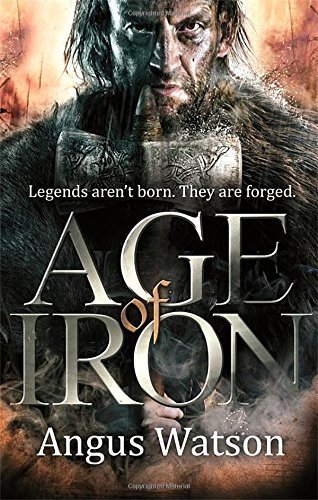
Next up is the film Centurion, directed by Neil Marshall, the director of Dog Soldiers as well as episodes of Game of Thrones and the excellent Black Sails. Centurion tells the story of a group of Roman soldiers trapped behind Hadrian’s Wall, being hunted by Picts, after the massacre of the Ninth Legion.
Now I enjoy this film, it’s well worth a watch, but I have a problem with it. Like a number of other books and films about the disappearance of the Ninth Legion, the Romans are the good guys and the Picts are the bad guys! The Romans were invaders, their civilisation was built on slavery and they watched people wound and kill each other for fun when they weren’t feeding them to wild animals. How the hell are the Picts the bad guys? Though to Marshall’s credit he does go someway towards explaining the Picts’ actions. Still a good film though.
More books: the Warlord Chronicles by Bernard Cornwall. This takes the familiar myths of King Arthur and puts them in a more historically accurate and realistic setting. These are by far and away my favourite historical novels. Well-drawn characters, heroes you can cheer for but with all the weaknesses that make the Arthurian Mythos so compelling. Treacherous villains that are often so unpleasant you want to boo them, which makes for a wonderful sense of satisfaction when they get their just desserts. Throughout the trilogy there is the constant sense of marching towards the inevitable tragedy of King Arthur’s story. I love these books and can’t recommend them enough. I particularly enjoyed Cornwell’s sarcastic, lecherous, cunning version of Merlin.
I’ve no idea why these books haven’t been turned into movies or TV shows, particularly when you see some of the crap churned out also based on the Arthurian Myths.
And finally my favourite ‘Celtic’ hero, and in fact probably my favourite fantasy character, certainly the character that got me interested in the genre (you can keep your Hobbits), from the pages of 2000AD, and the pen of the mighty Pat Mills: Sláine
The stories take inspiration from the Irish Myth Cycles, and in particular the Book of Invasions, but also pulls in ideas from other mythologies, Mills’ interests in paganism and magic, and some even more esoteric sources. The hero of the series is Sláine a barbarian warrior and later king, who would beat the living crap out of Conan if the latter were ever unfortunate enough to cross paths with him. Along with Ukko, his conniving dwarf sidekick, Sláine fights Fomorian sea demons, travels in blood-powered flying ships, defies gods, marries goddesses, rescues sacrifice victims that don’t want to be rescued from wicker men, travels across time for team ups with the likes of William Wallace, Boudicca and King Arthur (again), and slays a hundred to the left of him, a hundred to the right, and doesn’t think it too many.
The Horned God is probably Sláine’s most popular story, in part because of Simon Bisely’s amazing artwork. I love the Book of Invasions, Clint Langley’s artwork is truly beautiful. The best place to start, however, is the Warrior’s Dawn collection. Stories from back when Sláine was just a wandering warrior exiled from his tribe, the Sessair, for the crime of loving Niamh, the woman promised to the king. In Warrior’s Dawn Sláine spends all his time getting up to shenanigans with his repellent partner in crime.
Should Sláine ever receive the film treatment, and there is an amazing fan film, I am available for screen writing duties.
So if Age of Scorpio and/or A Quantum Mythology whet your appetite for Iron Age high adventure, or even if they don’t, all of the above are well worth checking out.
January 24, 2015
Hello world!
Welcome to WordPress. This is your first post. Edit or delete it, then start blogging!
November 25, 2014
Blog round up for Empires.
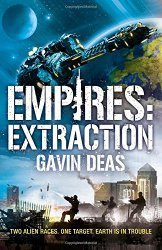
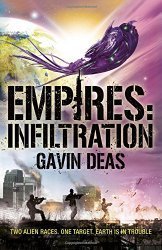
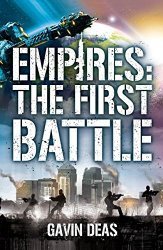
Stephen and I have been discussing (and arguing) about our shared world, cross-over novels, Empires: Infiltration and Empires: Extraction, on various blogs this week.
SFF World were good enough to let us both rant about our reaction to the other one’s work. Here’s Stephen talking about my book Empires: Infiltration and this is me talking about Stephen’s Empires: Extraction.
The folks at Sci-Fi Bulletin have also let Stephen write The Devil is in the Detail: An Introduction to the world of Empires. Well worth a read.
And finally (well for now anyway) we were favorably reviewed in the Financial Times of all places!
Empires: Infitration & Extraction out now!



I’m really excited about this. To my knowledge nothing quite like this has never been tried before, and I’m really looking forward to finding out what people think. Gavin Deas is the warped hybrid that we let loose when myself and Stephen Deas wish to collaborate. (You might remember us from the very well received Elite: Wanted.) So what’s it about?:
“This groundbreaking collaboration between two Gollancz authors tells of the invasion of Earth by two different alien races – at the same time. Two men become aware of the threat, and must work to sabotage the invasion plans and see off the aliens.
Each book follows one hero, uncovering the threat to humanity and the world from their point of view. Each book can be read on its own, and will give the reader a complete, kinetic, fast-paced military SF story. But read both books and the reader gets something else – another view of (some of) the same events and crossover points, culminating in a bloody battle at Canary Wharf.”
I wrote Infiltration and Stephen wrote Extraction. If you can’t find them in a bookshop then they are available on Amazon: here, here and here, Waterstones: here, here and here, and WH Smith: here and here.
October 28, 2014
Cover work for A Quantum Mythology!
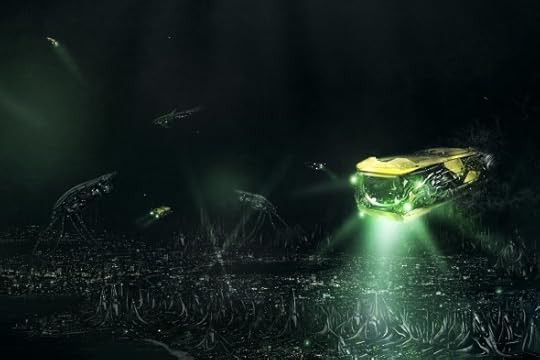
So you may have seen some other artwork for A Quantum Mythology kicking around but I can now reveal the real deal from the awesome Spyroteknik.
Five Things About My Work in Progress.
The good folks at SF Book gave me the chance to say a bit about what I’m working on at the moment: Five things about my work in progress.
Elite Dangerous: Wanted out in hardcover.

Elite Dangerous: Wanted, a tie in to the Elite Dangerous multiplayer space epic, co-written with Stephen Deas, is out in hardcover.
If you can’t find it, or don’t have time to get it from a bookshop then you can find it here: Amazon and here: Waterstones
Age of Scorpio released in mass market paperback.
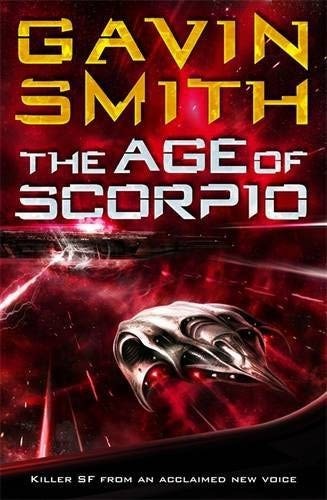
So because I am a bad author it has been a while since I properly updated the site. Age of Scorpio is now available as a mass market paperback, and has a cover quote from no less a luminary than Peter F. Hamilton!: “Age Of Scorpio announces loud and clear that in Gavin Smith an exceptional talent has arrived to uplift SF. The book is a master class of twisting plot lines that celebrate both the weird and astounding, amid a future that’s deeply unnerving yet equally compelling.” Which was very kind of him indeed.
So I recommend a bookshop but if not then it can be found on Amazon and on Waterstone’s website.
Gavin G. Smith's Blog
- Gavin G. Smith's profile
- 102 followers



